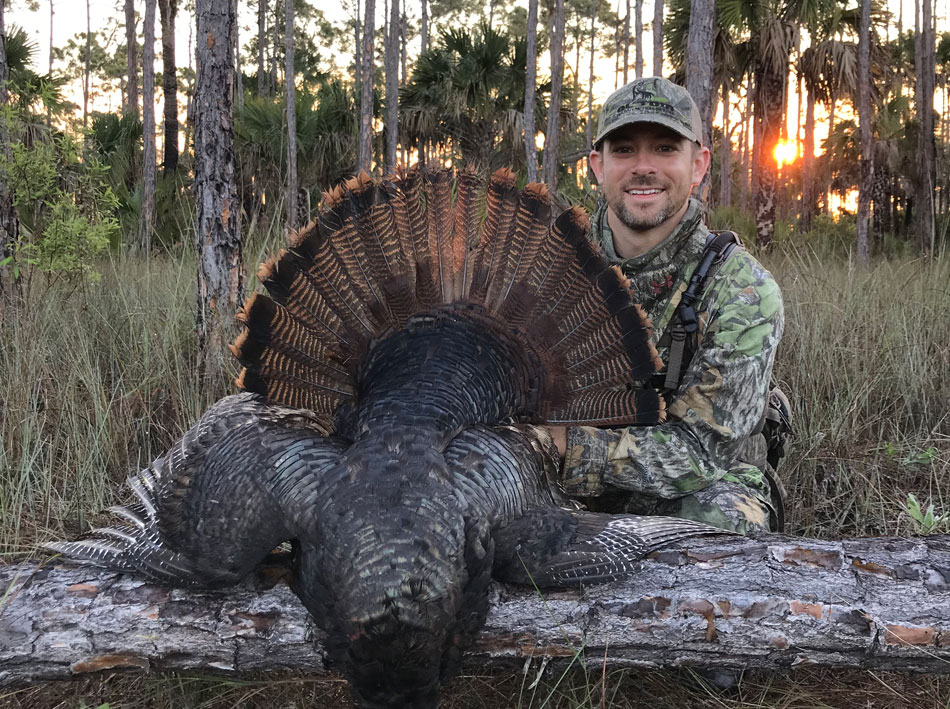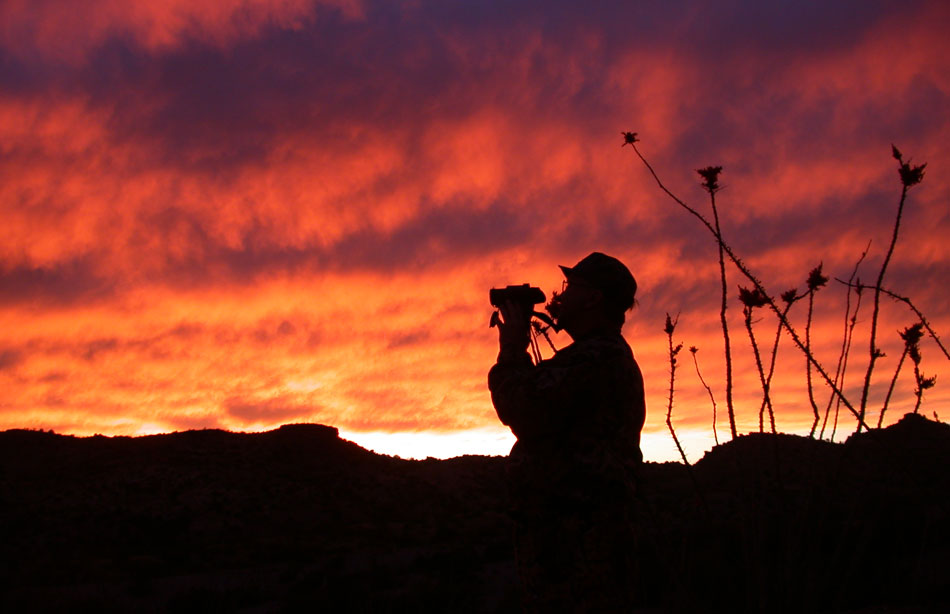David Owens from Acworth, Georgia, is the 2018 National Wild Turkey Federation (NWTF) Grand National Senior Open Division turkey-calling champion. In 2017, he completed an almost unbelievable feat by completing the U.S. Super Slam of wild turkeys, taking 49 gobblers in the 49 states with 90 percent of those birds harvested on public lands. Owens started hunting turkeys when he was 13 and has been hunting them for 20 years. He’s only been entering turkey-calling contests for six years. A Mossy Oak ProStaffer for four years, Owens prefers wearing Mossy Oak Bottomland for his early-season hunting and Mossy Oak Obsession for hunting late-season turkeys.
Dave Owens | Mossy Oak ProStaff

After completing my research of public lands for turkey hunting, many wonder how I find turkeys once I get there. I start by going to areas that should hold turkeys. I’ll usually have at least six locations that I want to check on public land in the state that I plan to hunt. I’ll usually find sign or hear a turkey gobble in at least one of those six locations. If I get lucky, the first place I check may have gobbling turkeys. But there’s no way you can be 100-percent accurate, until you put your boots on the ground. But by having six different locations where all my research tends to indicate gobblers should be, I drastically increase my odds for success.
I've found that the most reliable source of information to pinpoint a turkey to hunt on public lands are local resources. If you can find someone who knows at least what a turkey looks like, and where he's seen turkeys, you're ahead of the game. For instance, a forester on the public land you plan to hunt may not be a turkey hunter, but he knows what a turkey looks like, and he can tell you where he's seen turkeys crossing the road, walking out in a clear cut or out in a field. That’s good local information. I think foresters and the people who cut timber on public lands are two of the most reliable sources for identifying where turkeys are on public lands, because they’ve probably spent more time out on that land than anyone else does.
In the spring, the state wildlife biologist responsible for the public land you plan to hunt is out on that land doing brood counts and also looks for turkey food and turkey habitat all year long. States in the Northeast often have crews of people who do controlled burns, create food plots and mow and manage public hunting areas. If you can find out who those people are and talk with them, they also can provide reliable information on where they see turkeys while they’re working on the land. Anyone who spends a lot of time on the public lands you plan to hunt can often give you recent information that can be critically important to finding and taking turkeys during the spring season.
One of the advantages that I have is that I really enjoy the search for information about where turkeys live on public lands almost as much as I enjoy hunting the turkeys on that land. For me, finding places through map research and interviews before the hunt is like a search for a treasure map. Once I get that treasure map and pick out six places where the treasure may be buried, then every day I hunt I can hunt with confidence knowing I've done everything I possibly can to locate and hear a turkey gobble on public lands.
I really get excited when I discover a piece of information from a local, and then go to my satellite-imaging maps, my aerial photos and my topo maps and confirm that this spot has everything a turkey needs to live there. In 2003, when I was in college, I started using this system when I traveled to other states and hunted states I never had hunted before. I started with south Florida, and now I go everywhere and use this system.
The chase is part of the thrill of turkey hunting new locations. I'm totally hooked on the interaction I can have with a wild turkey gobbler once I find him. I like the challenge of hunting different types of terrain, and the challenge that terrain presents to finding and taking a gobbler. I've also learned that each different species of turkey reacts a little bit different, depending on the state and the type of terrain he lives in. I've always enjoyed the challenge of trying to figure out where I need to be and what I need to do to take that bird that day in that state.
As long as I've been hunting turkeys, as hard as I've been hunting turkeys, and as much as I know about turkeys, each day I really never know what’s going to happen when I go turkey hunting. I have to look for ways to adapt to the unexpected to try and be successful. I don’t really get upset when the turkey beats me. I try to learn something even when I lose to a turkey. When I'm fortunate enough to take one of those gobblers, I’m ecstatic. If I could boil down to what I like about my type of turkey hunting, it’s the challenge of the unknown each day.






























